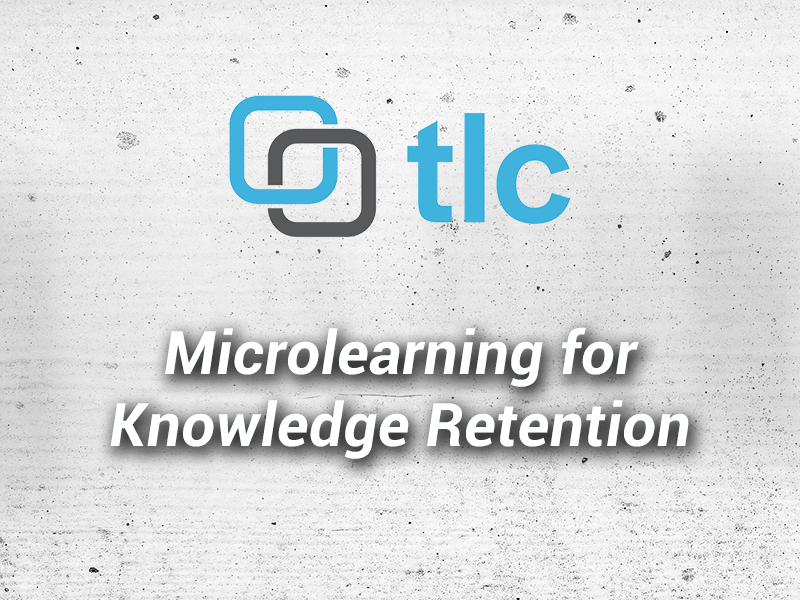
Hottest Trends in Learning for 2018
January 29, 2018
You Can (and Should) Include Gamification in Your Courses
May 30, 2018Do you consider yourself an instructional designer, developer, teacher, curriculum writer, coach? Whatever your title preference we all have the same goal, not to just write training material, but to have our learners be able to pull out and retain the information that we put in. Microlearning focuses on something specific as opposed to a broad range of topics, and has many benefits:
- It’s faster than some other types of learning, but it’s not just about long v short course material. It’s about making the most of a short time span. You want to WOW your audience quickly to grab their attention. Think of a microburst, which by definition, is a sudden, powerful, localized air current. We want to create one sudden and powerful burst of energy (knowledge) localized to one subject that has lingering effects (retention). It won’t cause a funnel cloud of information running through your mind but give your clear and concise information pertaining to what you need to know.
- It’s flexible and has many ways to reach the user. One example of microlearning is blogging on social media. That’s right, what I’ve done here is considered microlearning. You can also use short video games to engage the user more fully. Providing real world examples could also bring it home for some learners. If you are tackling a hard topic, give the learner an analogy. Visual aids are highly effective in helping your audience retain what they’ve read. When teaching, you must consider that people learn differently, and a great deal of people are visual learners. They also assist in catching and retaining a learner’s attention. Instead of looking at a black and white screen, a nice colorful, relevant image can motivate someone to see what the clip is about and retain it better because a connection is being made between the picture and the content.
- It’s portable. Microlearning and smartphones are a match made in heaven. Captivate’s 2017 fluid boxes are perfect for utilizing your mobile phone for a quick, power packed class. Examples include a company that has a new procedure, new rules, or a change in an environment that needs to be addressed with employees.
Breaking learning into smaller pieces has been around for ages. Think back to when you were in school, your textbooks were divided into chapters to break subjects down for easier learning and understanding. You wouldn’t have learned the periodic table of elements the same day you learned the parts of a plant. We can’t just READ to learn, we must engage our customers in order increase retention and most importantly be able to utilize that knowledge at a later point in time. Try Microlearning and give us feedback on your creation as well as your results.




4 Comments
Thanks for this blog. I just instituted a learning strategy based upon microbursts. Why? So I can re-use content across job roles (develop once; deploy to many). And, so that I can re-purpose new hire content for refresher training, remedial training, and performance management. Mixing and matching of content has made it possible to stretch the budget and get the right microbursts to the right job roles. So far, so good!
We do a lot of work with contact centers. One application of microbursts is working especially well. As you know, in contact centers, calls are monitored and evaluated for quality purposes. This evaluation is made using criteria on a score card. For new hire training, we created a microburst for every criteria on the score card (e.g., adhere to the opening script). If an agent makes an error that causes him to fail the call (not meet quality standards), that agent is prescribed a microburst for remediation. So, we immediately remediate our agents when the fail calls by adding microbursts to coaching on very specific behaviors (score card criterion). How cool is that!
Thanks for sharing your micro learning example with us Susan. This is way cool and love that you’ve been able to integrate this for remediation purposes!
Fundamentally your micro learning blog has simply provided facts and concepts, only on the “remember” level. Would you agree lower-order learning (facts, procedures, and. concepts) is most appropriate for micro learning? Also, can you provide a concrete example of a micro learning unit? Perhaps the game u mention in your post?
Hi Curtis … thanks for your comment. I believe micro learning can be applied to any level of learning if designed/developed appropriately. People have been “chunking” learning for a long time and are able to successfully measure the learning at different domain levels. While micro learning may be used more frequently at the lower-order learning you mention, you can also take things to the next level such as challenges, games, etc. We will be releasing more blogs on this in the future and will incorporate some examples for you.